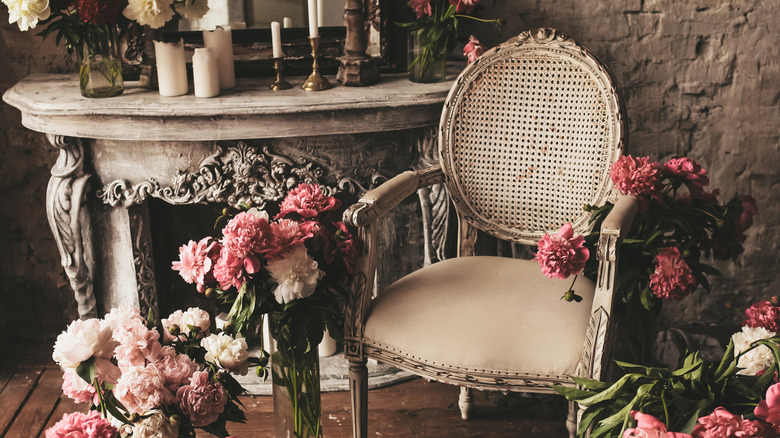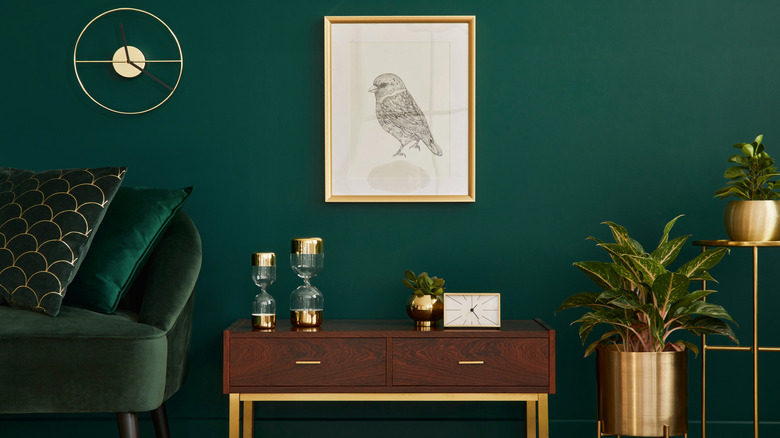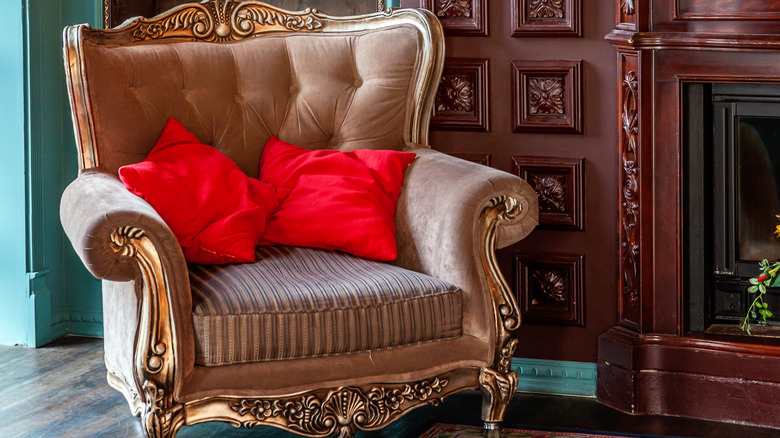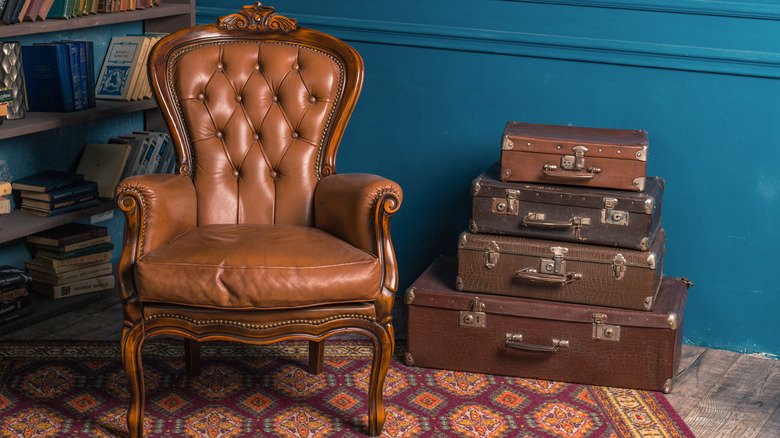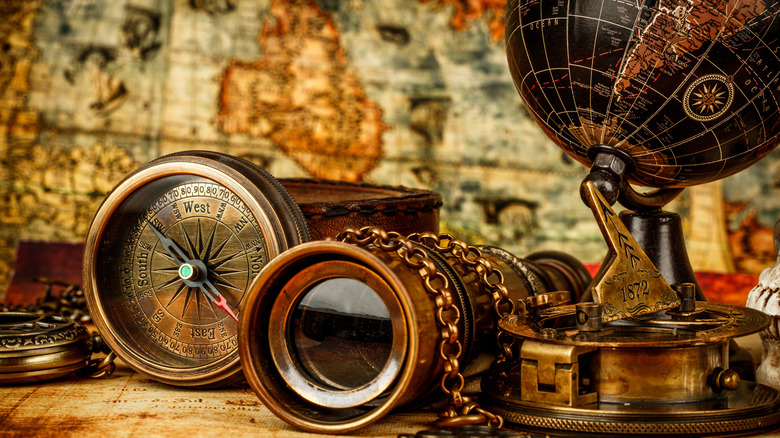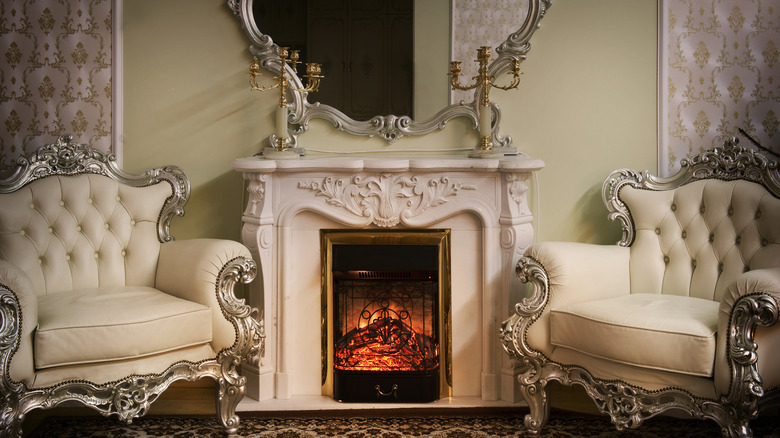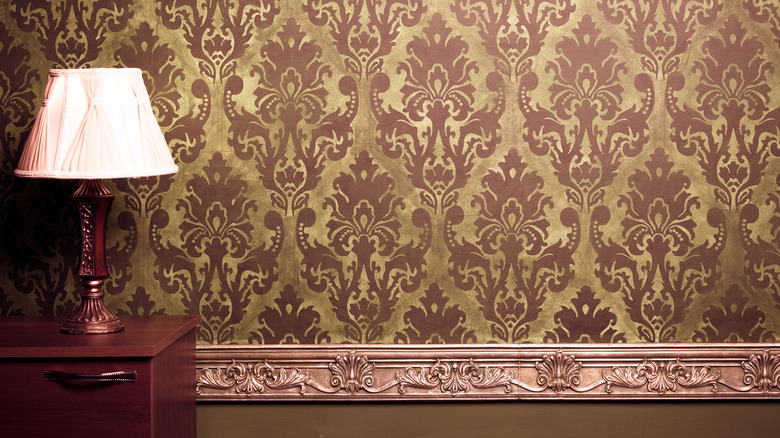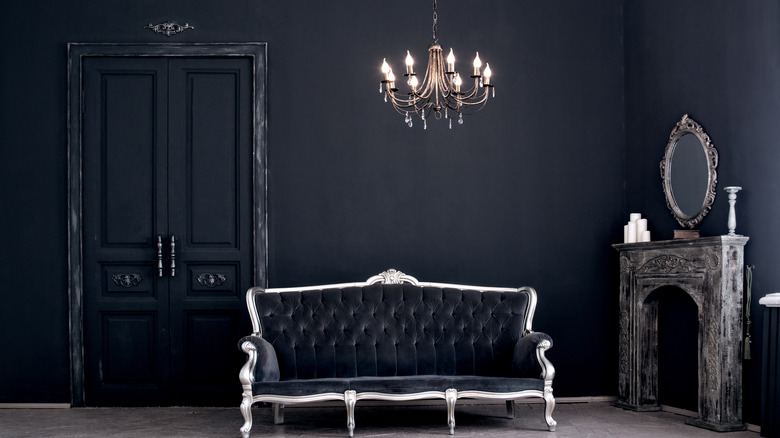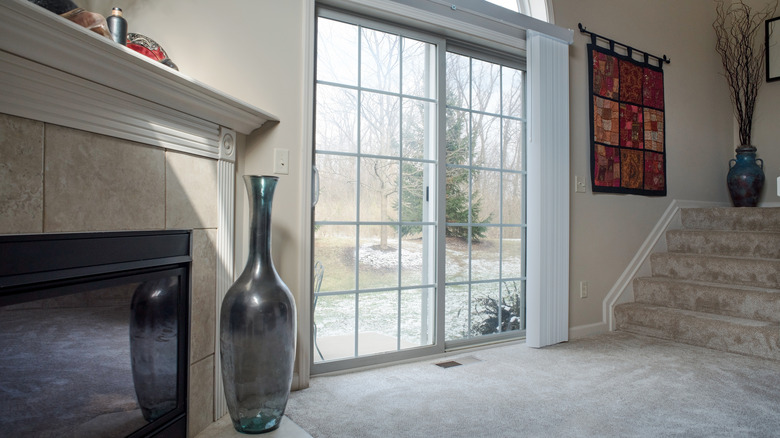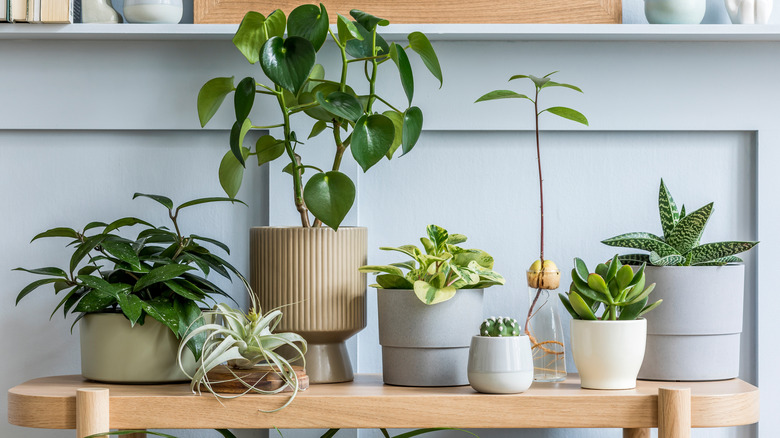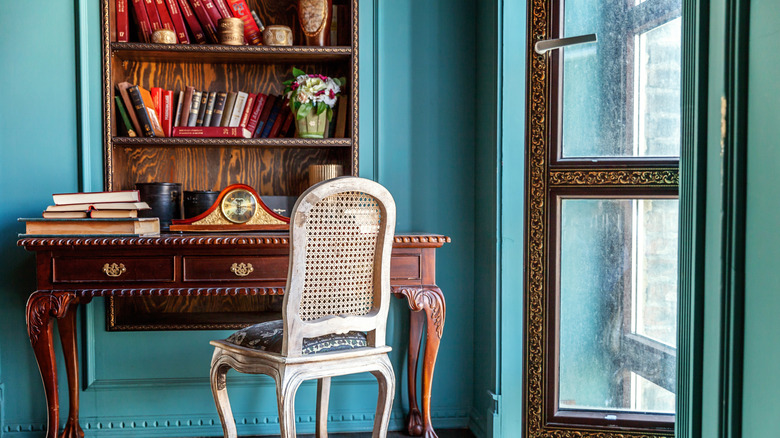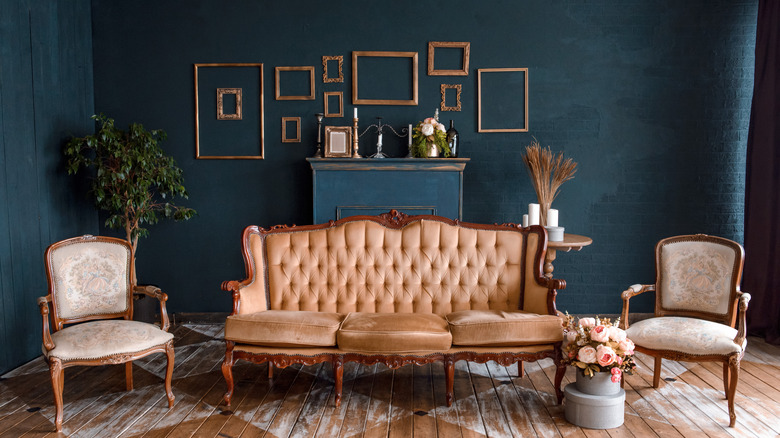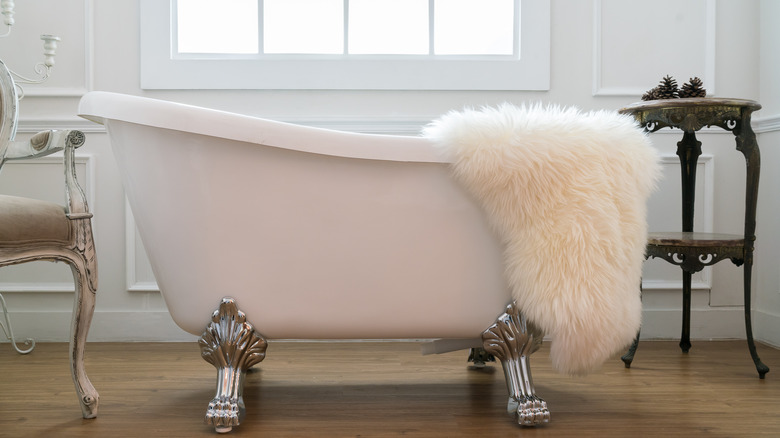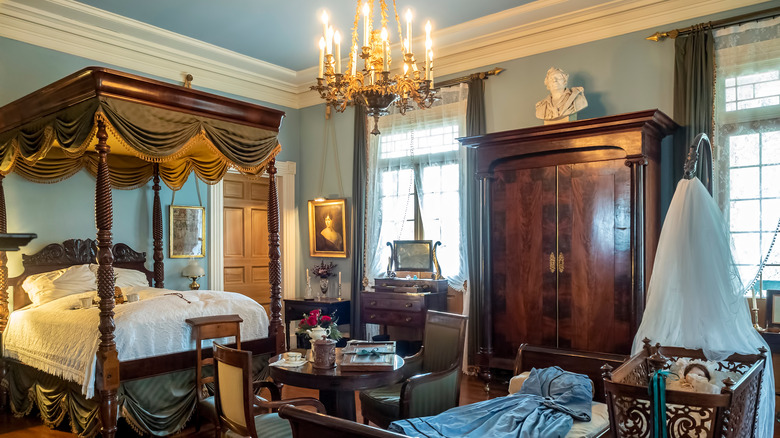How To Decorate Your Home Like The Victorian Era
The Victorian era was named for the years covering the reign of Queen Victoria from 1837 until 1901. This was a period of opulence which was characterized by beautiful and ornate mirrors, fancy upholstery, and chandeliers that would take your breath away. This décor style has survived the test of time and remains a classic and alluring aesthetic that many people love to decorate their homes with today, especially when they are going for a refined and elegant look.
There is nothing quite like Victorian interior design. But there's one problem, and this is the fact that filling your home with antiques will cause it to look dated and stuffy. So before you start purchasing items from the late 1800s, it's important you know how to decorate your home like the Victorian era, as there are several easy touches you can add that won't cost an arm and a leg (or require a visit to an antique dealer). Wonder where to start? Here are 13 easy tips to decorating your home like the Victorian era while still keeping a modern edge.
Consider your colors carefully
One of the key characteristics of Victorian decorating is the careful selection of colors to bring out the mood of a room. The Victorian era was a time when people liked to show off their opulence, and one of the ways they did so was by purchasing fabrics in deep colors that frequently came from faraway lands. Designer Kevin O' Gara told The Spruce to pick only one or two colors when designing your Victorian home, so as not to overdo it.
Dark colors don't mean just black. According to the London Design Collective, the dominant colors of the early Victorian era were jewel tones in deep purples, rubies, or even a nice emerald green. Just as you would any room, you'll want to decide on a theme — probably one of the above colors — and pair it with some dark browns for furniture and accents. The combination of these elements will create a comfortable and high-social class feel, without having to buy outdated furniture. For metals, you'll want to look for brass accents as handles for side tables or as bars to hold your curtains, as this was the common metal used at the time. Gilded Magazine suggests that you don't shy away from flower print or other patterns, as Victorians often used these in their home — as long as they matched the color scheme, of course.
Decorate with different fabrics
Besides the careful consideration of the colors for decorating, the Victorians were also big on heavy and expensive fabrics. According to the London Design Collective, there were extensive innovations in the dying, printing, and weaving of fabrics as a result of the Industrial Revolution. This allowed the Victorians to fill their homes with mass-produced textiles and furniture. Additionally, whatever a housewife wanted to purchase for the home needed to last her entire life. Therefore, the most frequent textiles used were velvet and silk, often with a muslin lining to protect them from the light.
Finding the perfect furniture piece in the color you need can be difficult. That is why, according to The Spruce, you may want to consider reupholstering a modern chair or couch to fit it in the room seamlessly. Velvet is a heavy material, best suited for the covering of a couch or chair. However, the Victorians were also known for having velvet curtains between rooms for privacy or hung on the wall as decoration. So grab some extra fabric for these purposes before you take your furniture to be upholstered. If you're buying furniture specifically for the purpose of reupholstering it, go for a smaller couch or chair, as this will keep the color of the piece from overtaking the room. Additionally, this is more authentic as furniture pieces were smaller back in the day anyway.
Add some fringe and tufting
Who you knew in the Victorian era was very important, and thus it was critical to impress every guest that came to visit your home. This was often accomplished with delicate details and intricate touches added to furniture via tufting and fringe. Now, tufting and fringe doesn't make a design look the most classic or refined when it is put on everything in a room. That is why France & Son suggests being cautious with how much you add to your home and where so you don't go overboard while trying to add textured details to the space.
Tufting is best added to a single piece of furniture in a room, like the couch, a headboard, or a statement chair. Whereas, according to Style by Emily Henderson, fringe looks more modern when it is more uniform across the entire room. Even if your couch and chair are upholstered in different colors, find one color of fringe that works with both colors and line both pieces, keeping the room cohesive. For those who don't want fringe hanging from any piece of furniture, you can also incorporate this touch in the edges of a rug, or even along the bottom of a lampshade or ottoman.
Create a simple collection
The Victorian era ushered in the beginning of the love of far off travel. Unlike decades past, where people seldom left their homes, the 1800s were a time of hopping on a boat to see a new place. Obviously, it was also important to show others that you had been to said far off place. This led to many Victorians creating collections of heavy, ornate furnishings, little trinkets, and knickknacks. They would display them on shelves in their parlor or sitting room for all to see, and the resulting style would be a romantic reflection of luxury and opulence.
Collections in modern decorating are difficult, as they can quickly look mismatched and kitschy. Therefore, in the words of Alessandra Wood, VP for Modsy, rather than focusing on how much you can accumulate in your collection, work on finding the perfect pieces (via The Spruce). Focus on crystal vases, china, and silver pieces as these create a more classic look and are easily displayed on a wooden shelf or in a glass cabinet. You can also collect some antique travel pieces, such as a telescope, map, globe, or compass, and display these simple pieces on a mantel or in a cabinet for best results.
Hang a gilded mirror
A mirror was an important installation in a Victorian home and can be incorporated into any room that you are decorating. Beyond just showing off the wealth of the family in the intricately designed frame, Decor Tips suggests hanging a mirror would make the room look bigger to guests who came for social calls. Victorian mirrors featured bold, carved styles and are still frequently found in antique shops today. However, they might need a little love to restore them to the look you desire for your home.
Another alternative is to reframe a mirror you already have with a Victorian style frame. While gild is the most commonly recognized Victorian style frame, West Land London mentions that wooden framed mirrors were also common at the time. These mirrors were often detailed with hand carvings and beautiful colored accents. So if you don't like the gilded look, consider a wood framed mirror with some gold, brass, and floral accents. In keeping with a more modern style, the bigger the mirror the better.
Line a wall or two with wallpaper
Wallpaper was a common feature of the Victorian home, as patterned wallpaper fit in well with the heavily decorated look and was easier to maintain than paint ( per V&A). The Victorians specifically enjoyed the fashionable wallpapers which had the texture of fabric, as these helped create a warm and homey vibe in the home. But these styles can often be difficult to incorporate into a more modern home.
It is important to know you don't have to wallpaper the whole room in order to bring this Victorian design element into your home. You can simply wallpaper a single wall, or opt to only wallpaper from a mid-wall trim and up. There are also many modern versions of Victorian wallpaper available which can keep the room looking fresh rather than dated. Designer Charmaine Wynter is known specifically for her amazing modern and Victorian designs, and she recommends starting your look with a wallpaper that has a textured look, as this can be easier to incorporate over one with a really crazy pattern.
Replace light fixtures
When decorating a home, you don't always have a huge budget for renovations, which can make it difficult when it comes to incorporating the intricate carvings often seen on Victorian mantle pieces and wall trim. To that end, an easy way to introduce the Victorian feel without making major changes is by replacing the light fixtures. From candles and wall sconces to standing Tiffany lamps and chandeliers, light fixtures are a key element to achieving this design style.
A classy chandelier was a common sighting in a Victorian home, and the cool thing about chandeliers is that they really do go with any room style, especially when you pick out a simple one. Remember that brass was the preferred metal of the Victorians, but this can be difficult to find these days, so Kelly Wearstler of MasterClass suggests you consider a chandelier that is painted to look like brass when you can't find one that is actually made out of brass. It is also easy to incorporate antique lamps into a space, or even just swap your current lamp shades for a move Victorian style.
Cover walls with fabric
Tapestries were huge during the Victoria era, due to the increased travel, as noted by Home Subjects. Many trade routes brought back intricate weavings from places such as Africa, India, Asia, and even the new world. Most homes only had room for one rug on the floor, so additional tapestries were hung on the walls. Sometimes, embroideries, or even fancy dresses were displayed as decoration on the walls of Victorian style houses as well.
Ron Nathan Interiors emphasizes that picking the right tapestry is critical when it comes to decorating your home in the Victorian style. Try to stick with your color theme, and only place a tapestry on one wall as an accent. Tapestries and embroideries were also traditionally draped over tables and mantles for the purpose of keeping collection items from sliding. While this look can now be seen as a little tacky, putting a smaller tapestry in the center of your coffee table can be a great way to incorporate one without it taking over the entire room.
Add plant and animal touches
Think adding a plant to your home is part of modern décor? Think again. National Trust explains that with the Victorians' increase in travel to places like Japan and India, they were influenced by exotic design elements in the home. The Victorians were known to have quite a few plants in their residences back in the day, especially ferns, which were rare at the time and a sign of family wealth. They were also big on taxidermy, frequently having stuffed animals in their home as hunting trophies or just for decoration.
While stuffed animals are generally frowned upon in modern society, for those who do have a stuffed creature, the Victorian style is the perfect way to incorporate it into your home. They were usually placed in a glass case, as this protected them as well as made them the show piece of the room. SFGate recommends you place a plant or two at the window, the larger the better, although orchids were also common in Victorian era home. Fake plants can be used instead of real ones, and they can be placed in any room of the home.
Add a library, or at least a library wall, to your home
Libraries became widely popular during the Victorian era as health, education, and sanitation grew better among the general public. Victorians loved their libraries, and having a private library in your own home was seen as a sign of royalty and upper-class status. According to Victoriana, libraries of the time were all of a similar style, filled with deep mahogany or oak shelves, complete with a window, velvet chair, and lamp for reading. Many also featured a fireplace, as well as the same décor style as the sitting room.
An entire library in your home may not be feasible, but invest in a few nice Victorian style shelves and line them with old books for the same effect. Place a tufted velvet chair nearby, perhaps next to a fern or a lamp. You can also just place a few books on top of the small tapestry on your coffee table, or as an accent on a side table. Basically, whatever way you can incorporate old books into your home will work, it is simply a must of this historic style.
Hang a gallery wall
Victorians didn't just place trinkets on every available surface, but they also hung pictures on any wall which wasn't covered with a tapestry. Now, don't go out and buy old photo frames or old style photos, because this will look tacky. Instead, Ron Nathan Interiors recommends that you create a modern gallery of your family in nice wooden or gilded frames to match the décor of the room.
The pictures work well when hung on a wallpapered wall, as it can be difficult to hang art there. Not sure where to try out the wallpaper wall and photo gallery? The stairway is the perfect place, as there typically isn't any other décor to interfere, and it isn't usually the first thing people see when they walk into your home. This gives you more leeway with colors and styles. Even if you don't have enough photos for a gallery, you can use art in different size frames for the same effect — travel and nature art tend to work best with the Victorian theme.
Go all out on a Victorian bathroom
Victorian bathrooms are something many people still dream about having in their homes today. The carved foot tub, the freestanding wash basin, and the dark walls which pair perfectly with candles make for a nice evening alone in the tub. Making your bathroom into the Victorian dream is easy, especially because people still love this style. You will likely be able to find the claw footed tub and a freestanding washbasin sink at most home décor places.
But like anything else in the Victorian home, Decor Tips cautions that it's all about the small touches which make the Victorian bathroom unique. You'll want to consider incorporating some dark paint in Victorian colors in your bathroom, or maybe even some wallpaper. Place a gold or terracotta pot in the corner. Affix the lights to the wall, the ones with the little lampshades, and of course, you'll need a mirror for this room as well. Armchairs or other small couches were often present in a Victorian bathroom, according to Vivacious Victorian. So for those that have the space, slide one of these in the corner for a truly extravagant and authentic look.
Transform your bedroom into a Victorian oasis
Redecorating your entire home can be quite the project, so starting in one room like your bedroom can be a great place to begin the transformation. Architecture Designs explains Victorian bedrooms have many of the same aspects of the rest of the home. But instead of needing to re-carve your fireplace, you can simply invest in a carved wooden bed in the Victorian style. Place a curtain at the top of the bed to complete the look.
According to Décor Tips, Victorian bedrooms also typically had seating. Add a tufted bench at the end of the bed and perhaps a chair or chaise lounge in the corner. Swap out the bedroom lighting for a chandelier or authentic lamps. The windows should be lined with the same curtains that hang at the head of the bed. Place an antique nightstand to one side of the bed and try adding an antique dresser on the other. An antique tea set can be set on either of these surfaces, or if your sitting area is large enough, place a small coffee table here to display the tea set.
